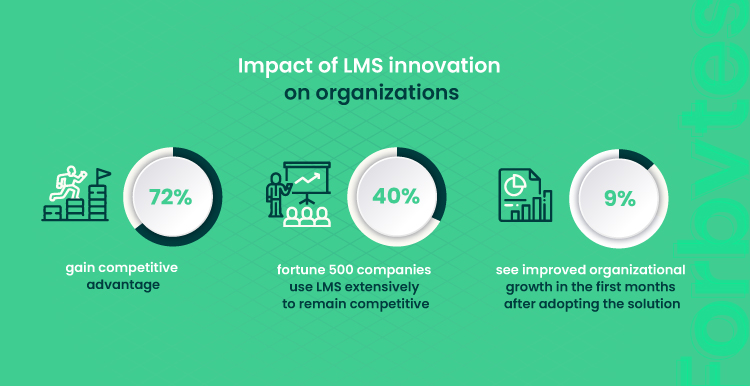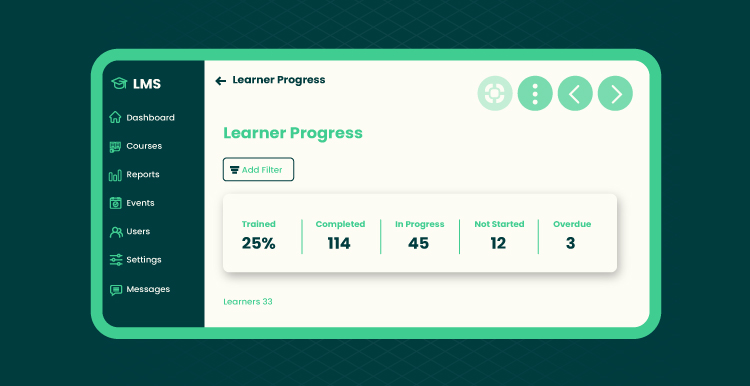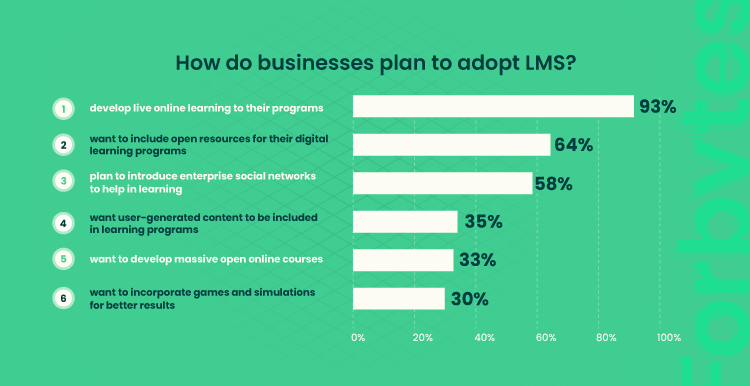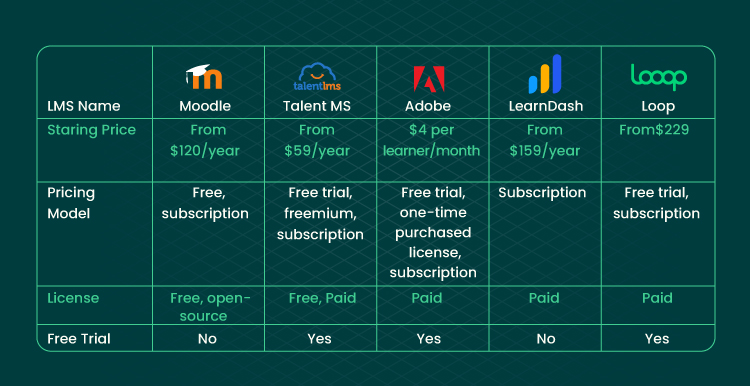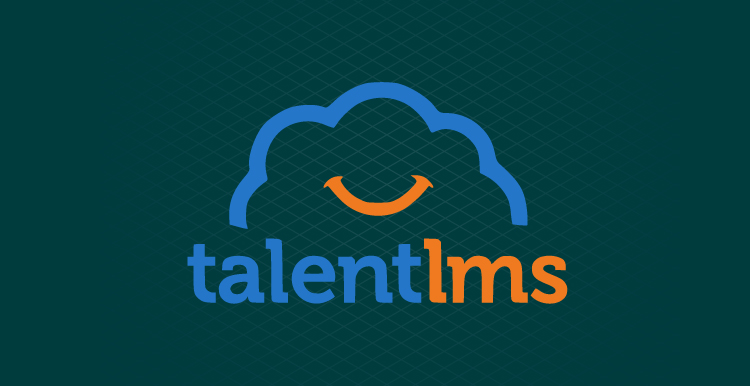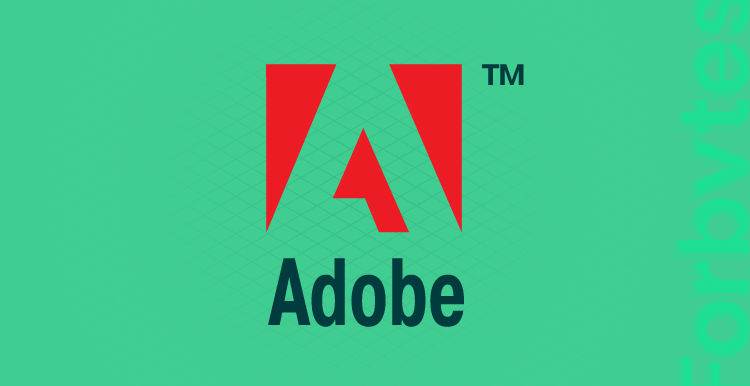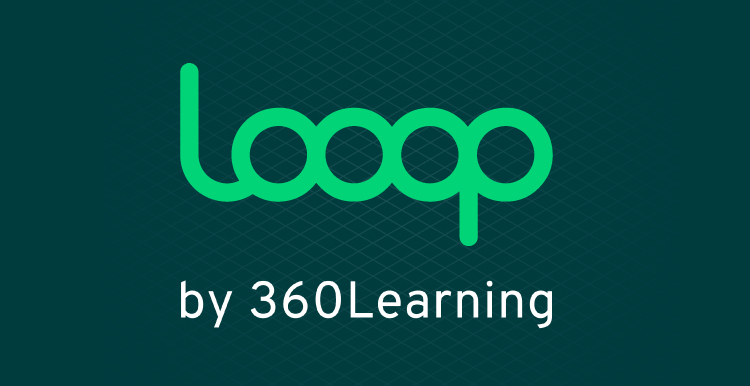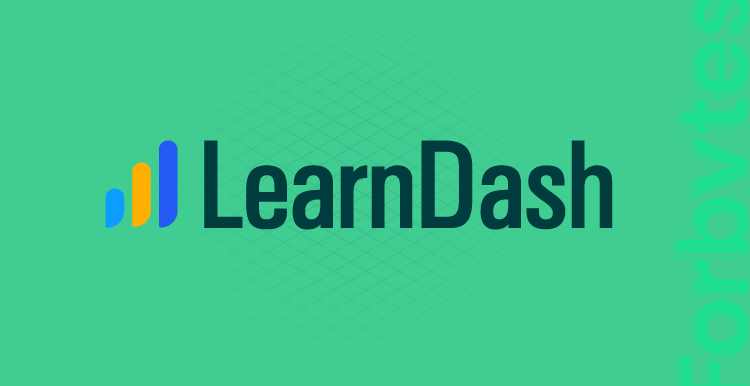You are never too old to learn — we hear this very often. Indeed, even if you are no longer a student, you shouldn’t stop learning. But why do people think that the desire to learn is linked to a particular age? Why do such phrases exist at all? Simply because the culture of adult learning and self-education only starts to grow. Today, it has become cool to attend web-based training courses, no matter how old you are. Perceiving the world via the learning journey — that’s what the 21st century requires.
There are a lot of examples of how education changes organizations, employees’ way of thinking, and the speed of moving toward goals. Once, the Toyota company also decided to join the list. They started their way to becoming a “learning” business by diving into root cause analysis. This is the analysis under which you name the cause that you “think” led to a problem, instead of naming the cause that you “know” brought a problem. By adopting this mental model, Toyota gradually moved to lean manufacturing. Lean manufacturing is closely linked to root cause analysis. This is how learning and simple mind practices helped a company to move to the practical implementation of the gained knowledge.
If you want to be like Toyota, facilitate training in your organization. To get value out of this process, you need to make online training manageable, controllable, and trackable. And this is where enterprise learning management enters the game.
Today, we will discuss what an enterprise learning management system is. We’ll also check what functions it has, what tools bring the most benefits, and when to hire a software engineering team to build a customized solution.
What Is an Enterprise-Level Learning Management System?
Do you know that more than 80% of modern organizations use enterprise LMS? With a CAGR rate of 19.6%, the LMS market is expected to reach $22.4 billion in a year. The popularization of enterprise LMS tools has brought about a real digital transformation of the learning industry. Be it custom solutions or off-the-shelf software, an enterprise LMS helps businesses organize online learning and handle.
For example, this is how the LMS market is evolving in North America:
But what LMS? A learning management system, or LMS, is a software solution used for handling the process of learning. You should not confuse LMS with LCMS. The latter stands for learning content management system and is used to organize the training materials and custom learning content. Unlike LCMS, learning management systems are not limited to content management and cover many, if not all, aspects of learning.
Enterprise LMS combines the power of technology with the benefits of education. Suppose that your company has 50 employees who have to undergo professional development. You choose the format of training courses. In this case, you should hire a trainer who has a ready-made course. This will cost you $3000 on average. You will have to pay for the number of employees enrolling in each instructor-led training module. Moreover, you will have to pay again and again whenever new people join the course. Or you can order course development and lead the course by yourself. This will also cost you $4500-10,000.
To join the course, your employees will need equipment. This also adds to your expenses. On top of that, a trainer may increase the price for their services depending on the number of attendants. You may ask, “Is there some alternative to this tedious learning strategy?” We will answer, “To build a custom enterprise learning management system or to choose among the off-the-shelf ones.”
Yes, if you choose this way out, you will also have to spend money and either pay a monthly fee or invest in the development process. But there is a difference with this approach. Such an investment will pay you off in the form of unlimited education opportunities and prospects.
Take the above-mentioned situation as an example. If you choose this strategy, there will be no need to hire trainers each time you decide to launch courses. You will save a fortune on equipment and course management. And whenever you decide to restart a course for a new audience, it will come for free. You will have a system to create content, manage leadership development programs, facilitate communication, and online learning stages, etc.
Enterprise LMS helps 72% of organizations gain a competitive advantage. At least 9% of these organizations see their profit and productivity improve. Moreover, this type of software is used by some businesses extensively. It emphasizes the big role of enterprise LMS in helping businesses grow and stay relevant.
An enterprise training platform performs the following functions:
- Learning process management. This includes managing course attendants, courses, responsibilities, tasks, and goals. Also, an enterprise LMS allows for course scheduling and giving instructions.
- Learner assessment. Learners can assess their progress throughout the course and focus on the aspects that need improvement. Also, managers track employee results and assess them with standardized procedures and criteria.
- Sending notifications. Users get notified when there is an upcoming event, an unfinished task, the deadline is close, and so on.
- Analytics. LMS allows for relevant learning analytics integration. You can generate reports on course progress for each attendant separately and the course as a whole. This will enable managers to discover and visualize tendencies, report on the weakest and strongest aspects of learning, etc.
- Certifications. LMS allows for certification training. Managers check each course attendant’s profile registered in the enterprise LMS to see how things are going for each employee. After course completion, employees boost their qualifications and leadership skills and get certificates.
- Competency management. Other employees can access public information about the competency of a given attendant. Potentially, it will help managers to create effective teams. In such teams, different skills are combined into a powerful set tailored to specific business tasks.
Why Do Enterprises Need It?
Enterprises tend to complain that the money spent on online training does not pay off in the form of better productivity, increased competence, more income, and so on. The reason may lie in the ineffective organization of learning or the irrelevance of development programs. Sometimes, it can also be the low motivation of employees that leads to poor results. All of these problems can be solved with an extended enterprise LMS. This is how businesses come to the implementation of learning management software:
We compiled a list of the 10 most important reasons why enterprises may need to adopt enterprise LMS at the workplace:
- This is a foundation for interactive, social learning. Enterprise LMS systems make learning paths more dynamic. You get access to a bunch of useful tools, tests, quizzes, and interactions that facilitate social learning. With such an approach to education, it becomes easier to learn new information and apply it at work.
- LMS is all about learner-oriented education. You move from trainer-centered to student-centered learning. In trainer-centered learning, employees passively absorb information delivered by one person. There is a limit to students who can undergo the course simultaneously. This is because a trainer should have the physical capacity to control everyone’s progress. Under a learner-oriented approach, an online training program is adjusted to their schedule, tempo, and needs.
- You get personalization. A look at the general picture makes it harder to see individual progress. LMSs give learners the tools for personalized learning. There is no need to build a separate online testing platform to see the growth. For instance, a quick quiz before starting the course helps to define the expectations and emphasize the aspects of learning that require particular attention. Informative reporting at the end of each learning episode and at the end of the course can also facilitate positive results.
- LMS is a centralized repository for managing education at the workplace. You get everything in one place. You launch training programs, keep track of your employees’ self-development, detect gaps and weak spots to receive the needed training, train newbies, and much more. A custom enterprise LMS solution combines education, communication, practice, and analytics. This allows you to administer online training seamlessly and effortlessly.
- You increase education accessibility. You can adjust an enterprise learning management system to different learning styles (video, audio, PPT, PDF) and increase the audience’s interest. Also, when you use a single system for enterprise learning management, you reduce the possibility of tech issues and bugs. Experienced software development teams build enterprise LMS solutions that are responsive and intuitive. This, in turn, enables employees to study when and where they want. For instance, if you enable a user to access the course via mobile, you increase the time spent by the student studying the material. And if your employees prefer mobile learning, consider implementing a mobile-first strategy for your digital product.
- You get control over the situation. By using a multi-function platform, you get access to a number of features and integrations. It allows you not only to track employee progress but also to get to know your team better. For instance, you can analyze what type of learning your employees like the most. Use this information to build a truly modern training program and facilitate learning.
- Improving team results effortlessly. There will be no need for you to ask a manager to conduct onboarding courses each time a newcomer joins your team. Instead, you will be able to sign them up on the enterprise learning management platform and add them to diverse learner groups. You will save a ton of time for your managers if you let them perform these processes on the enterprise training platform.
- You favor the exchange of experience. If you order course development from a trainer, you put the trainer at the center of the whole learning process. If you decide to use LMS to present or build a course, you leave space for employee initiative. Your learners will be able to communicate in an enterprise LMS and exchange their knowledge. They will comment on the course and share their opinions and feedback. It will let your team always move on and get deeply native learning experiences.
- Your company shows an expert approach. If you have a professional learning management system, your employees take learning seriously. It will positively affect your brand image in the eyes of prospective customers as well as potential teammates. This is also a great advantage when it comes to compliance and safety training in high-risk industries.
- You automate the processes and effort. Instead of collecting info on how your employees evaluate the course results, you may just look at the analytics section of your enterprise LMS. It automates the analysis and saves you time that can be spent on generating fresh ideas for your team to become more powerful and effective.
Basically, these 10 reasons make enterprises put the question “What is LMS?” on Google and look for a good solution. But what solution can actually be considered good? Let us present some of the popular options and then discuss a custom way of LMS software engineering.
Review of Popular LMSs
Some of these tools offer a free trial and the opportunity for continuous learning. Compare them and decide which one is the best for your learning initiatives.
Moodle
Moodle is a free tool for enterprise learning management. It enables businesses to register an unlimited number of users. You can add various activities, plugins, and integrations to this solution. Your team gets access to the cloud academy library, different guides, resources, and APIs as well.
Also, one of the strong aspects of Moodle is its universality. But what does universality mean in the context of corporate training? It means that to get all the needed functions, your dedicated team of developers will have to customize the solution. If you have no people with profound tech skills around, consider other educational options for the software.
TalentLMS
TalentLMS is a great learning platform for both employee and customer training. It is cloud-based and does not require you to install or regularly update it. TalentLMS is used for effective course creation by both small and large enterprises. Its flexible pricing allows everyone to find a suitable plan.
Among the famous users of TalentLMS, we may mention the University of Arizona, LG, and Acquia. You may ask, why are such famous companies not afraid of using a third-party service for training specific practical skills of their staff? Simply because of the security and reliability of the solution. In TalentLMS, learning data is encrypted and processed via secure channels. The weak side of TalentLMS is its communication features. It cannot be called a collaborative learning platform. There’s no chat function, comments, or discussions that could help employees manage their workplace training better.
Adobe Captivate Prime
This is a consistent learning management system solution. Its goal is to make the learning process more entertaining and personalized. With Adobe Captivate Prime, you can organize courses for any audience, be it your employees, stakeholders, or clients.
The solution allows for social, peer-to-peer learning across the value chain. You facilitate employee skills development and can reskill them according to your business needs. Users rate this platform at 7.6 out of 10. Among the weaknesses, they mention a lack of client support and poor customization of certificates.
Looop
Looop is one of the favorite tools of big enterprises — more than 10,000 businesses adopt this solution for extended enterprise training. Not to distract user attention, Looop encompasses only the necessary features. You can use the format of text, audio, video, or pictures to create and manage educational content.
Due to the high rate of this solution, there are not so many drawbacks to focus on. Still, users mention that some features of Looop could be more time-saving and intuitive.
Learndash
This is a WordPress plugin that enables you to create and even sell online courses. With Learndash, you can build an immersive customer education experience. Your managers can launch an internal enterprise certification program, give assignments, create quizzes, and so on. This is in addition to all basic functions of course creation.
Among the drawbacks of the solution, we may mention limited payment options and limited membership features.
Custom Enterprise Learning Management Systems
The solutions mentioned above are great. But they are targeted at a big audience, which makes them universal and widely applicable. At first glance, it may seem like a big benefit, particularly for businesses with a limited budget. But when using a platform, it may turn out that it cannot meet your specific goals and satisfy your pains. It may happen that you review all the options and find out that you see the education process in your organization differently. In this case, consider building a custom enterprise learning management system based on the Agile methodology.
A custom LMS will give you many benefits. Together with the hired team, you will create a project roadmap, choose the right approach, be it microservices or monolith, and adjust the development process to your budget and deadlines.
Custom solutions are tailored to your requirements and the peculiarities of your business. A dedicated team builds a solution from scratch. You choose what the platform should look like, what sections to build in the menu, and what elements and add-ons to integrate. You do not overload your users with unnecessary features, do not pay for unnecessary functionality. A one-time investment in a custom LMS will help you organize learning programs effectively.
To develop a powerful enterprise LMS, consider the following key aspects to be included in the solution:
And last but not least, you need to organize the very process of employee training effectively. For this, check out the 3 tips from Stephen Goldberg, a leadership trainer and coach for managers.
Summing Up
In this post, we discussed what enterprise-level learning management is, what functions an enterprise LMS has, and what LMS options are available on the market. If you feel that the off-the-shelf solutions are ineffective for your business, you may always consider one of the outsourcing models and build a custom LMS. This one-time investment will surely pay you off in the form of saved time, a motivated team, and better business results.
If you are at the crossroads between paying LMS providers and developing your own solution, it’s a good idea to consult an experienced IT team. Together with business analysts and software engineers, you will build an effective strategy for becoming a truly “learning” business. All you need to do is leave us your contact details, and you will get a prompt response from the Forbytes representatives.

Our Engineers
Can Help
Are you ready to discover all benefits of running a business in the digital era?

Our Engineers
Can Help
Are you ready to discover all benefits of running a business in the digital era?



